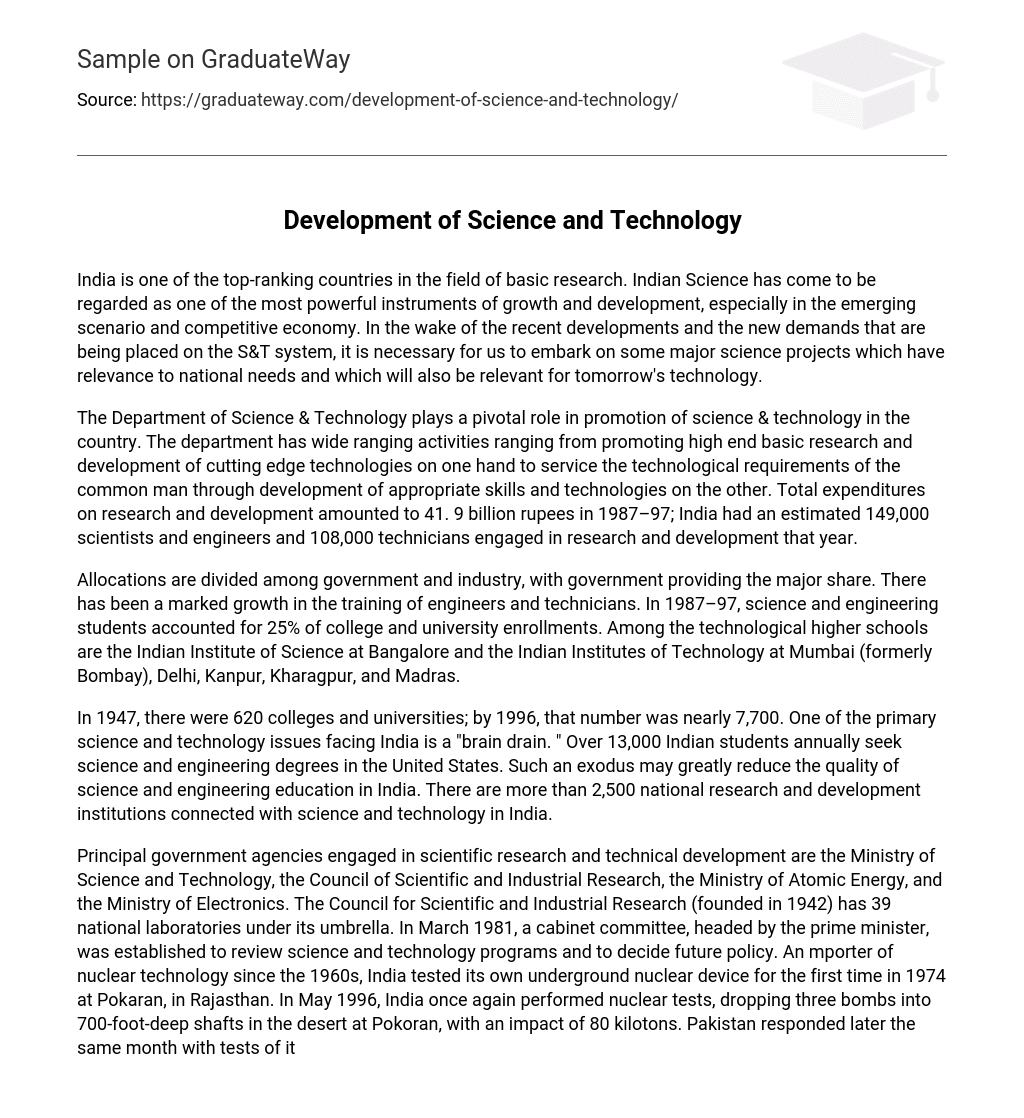India is one of the top-ranking countries in the field of basic research. Indian Science has come to be regarded as one of the most powerful instruments of growth and development, especially in the emerging scenario and competitive economy. In the wake of the recent developments and the new demands that are being placed on the S&T system, it is necessary for us to embark on some major science projects which have relevance to national needs and which will also be relevant for tomorrow’s technology.
The Department of Science & Technology plays a pivotal role in promotion of science & technology in the country. The department has wide ranging activities ranging from promoting high end basic research and development of cutting edge technologies on one hand to service the technological requirements of the common man through development of appropriate skills and technologies on the other. Total expenditures on research and development amounted to 41. 9 billion rupees in 1987–97; India had an estimated 149,000 scientists and engineers and 108,000 technicians engaged in research and development that year.
Allocations are divided among government and industry, with government providing the major share. There has been a marked growth in the training of engineers and technicians. In 1987–97, science and engineering students accounted for 25% of college and university enrollments. Among the technological higher schools are the Indian Institute of Science at Bangalore and the Indian Institutes of Technology at Mumbai (formerly Bombay), Delhi, Kanpur, Kharagpur, and Madras.
In 1947, there were 620 colleges and universities; by 1996, that number was nearly 7,700. One of the primary science and technology issues facing India is a “brain drain. ” Over 13,000 Indian students annually seek science and engineering degrees in the United States. Such an exodus may greatly reduce the quality of science and engineering education in India. There are more than 2,500 national research and development institutions connected with science and technology in India.
Principal government agencies engaged in scientific research and technical development are the Ministry of Science and Technology, the Council of Scientific and Industrial Research, the Ministry of Atomic Energy, and the Ministry of Electronics. The Council for Scientific and Industrial Research (founded in 1942) has 39 national laboratories under its umbrella. In March 1981, a cabinet committee, headed by the prime minister, was established to review science and technology programs and to decide future policy. An mporter of nuclear technology since the 1960s, India tested its own underground nuclear device for the first time in 1974 at Pokaran, in Rajasthan. In May 1996, India once again performed nuclear tests, dropping three bombs into 700-foot-deep shafts in the desert at Pokoran, with an impact of 80 kilotons. Pakistan responded later the same month with tests of its own. The first Indian-built nuclear power plant, with two 235-MW heavy-water reactors, began operating in July 1983, and an experimental fast-breeder reactor was under construction.





